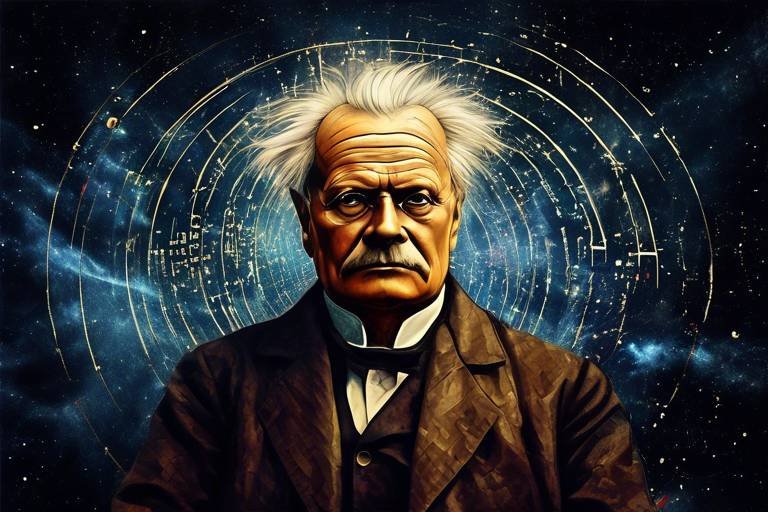The Contributions of Barbara McClintock to Genetics
This article explores the groundbreaking work of Barbara McClintock, a pioneering geneticist whose discoveries transformed our understanding of genetics and earned her a Nobel Prize for her contributions to the field. McClintock's journey is not just a tale of scientific achievement; it's a story of perseverance, innovation, and the relentless pursuit of knowledge. Her work, often ahead of its time, has left an indelible mark on modern genetics and biotechnology.
Barbara McClintock was born on June 16, 1902, in Hartford, Connecticut, into a family that valued education and intellectual curiosity. Growing up, she was fascinated by the natural world, often collecting insects and plants. This early interest laid the groundwork for her future scientific endeavors. After high school, she attended Cornell University, where she initially pursued a degree in agriculture. However, her passion for genetics soon led her to switch her focus to the field of botany.
At Cornell, McClintock was surrounded by influential mentors who recognized her talent and encouraged her to delve deeper into genetics. She earned her Ph.D. in 1927, making her one of the few women in her field at that time. The challenges she faced as a woman in a male-dominated field only fueled her determination to succeed and innovate.
McClintock's most notable discovery was that of transposable elements, commonly referred to as "jumping genes." This revolutionary finding emerged from her meticulous research on maize, where she observed unexpected patterns of inheritance. Unlike the traditional view of genes as fixed entities, her work revealed that certain genes could move within and between chromosomes, leading to variations in traits.
Her discovery was not just a scientific breakthrough; it was a paradigm shift in how we understand genetic regulation. McClintock's work suggested that genes are not static but dynamic entities that can influence each other in complex ways. This insight has profound implications, not just for genetics but for fields like genomics and biotechnology.
What set McClintock apart from her contemporaries was her innovative research methodology. She employed techniques that allowed her to visualize genetic phenomena in ways that others had overlooked. For instance, she used chromosome staining methods to observe the behavior of genes during cell division. This approach enabled her to track the movements of transposable elements, providing concrete evidence for her groundbreaking theories.
McClintock's ability to combine meticulous observation with creative experimentation was key to her success. Her research methodology not only paved the way for her discoveries but also set a standard for future genetic studies.
McClintock chose maize as her primary model organism for several compelling reasons. First, maize has a relatively simple genetic structure, making it easier to study. Second, its large chromosomes are easily observable under a microscope, allowing for detailed analysis of genetic behavior. Finally, the plant's diverse phenotypic traits provided a rich canvas for studying inheritance patterns.
By focusing on maize, McClintock was able to uncover the complexities of genetic regulation, challenging the prevailing notions of her time. Her work with maize not only advanced the field of genetics but also highlighted the importance of model organisms in scientific research.
The implications of McClintock's work on transposons extended far beyond her initial discoveries. Her findings significantly advanced genetic mapping techniques, allowing scientists to better understand gene regulation and chromosome behavior. By demonstrating that genes could move, she opened new avenues for research into genetic variation and evolution.
This understanding has played a crucial role in modern genetics, influencing everything from agricultural biotechnology to medical research. The ability to manipulate genes has led to innovations such as genetically modified organisms (GMOs) and targeted gene therapies.
Despite facing significant gender bias throughout her career, McClintock's contributions did not go unnoticed. She received numerous accolades, including the prestigious Nobel Prize in Physiology or Medicine in 1983, which she shared with two other scientists. This recognition was not just a personal triumph; it was a victory for women in science, showcasing the importance of diversity in research.
Her awards also include the National Medal of Science and election to the National Academy of Sciences. These honors reflect her groundbreaking contributions and the lasting impact of her work on the scientific community.
Barbara McClintock's legacy continues to influence modern genetics and biotechnology. Her discoveries have paved the way for advancements in genetic engineering, genomics, and our understanding of complex traits. The principles she uncovered about gene mobility and regulation are now fundamental to genetic research.
McClintock's work has inspired countless scientists, encouraging them to explore genetic mechanisms further. Her innovative approach has shaped contemporary research directions, leading to breakthroughs in areas such as gene therapy and personalized medicine. Her pioneering spirit serves as a reminder of the importance of curiosity and perseverance in scientific exploration.
In addition to her research, McClintock was dedicated to education and mentoring. She believed in the importance of nurturing young scientists and promoting women in science. Throughout her career, she actively encouraged students to pursue their passions and think critically about scientific problems.
Her commitment to education has left a lasting impact, inspiring future generations to follow in her footsteps and continue pushing the boundaries of genetic research.
- What are transposons? Transposons, or jumping genes, are segments of DNA that can move around within the genome, influencing genetic traits.
- Why is Barbara McClintock significant in genetics? McClintock's discovery of transposons revolutionized our understanding of genetic regulation and inheritance.
- What awards did Barbara McClintock receive? She received numerous accolades, including the Nobel Prize in Physiology or Medicine and the National Medal of Science.
- How did McClintock contribute to education? McClintock was dedicated to mentoring young scientists and promoting women in science throughout her career.

Early Life and Education
Barbara McClintock was born on June 16, 1902, in Hartford, Connecticut, into a family that valued education and intellectual curiosity. Growing up, she was surrounded by a rich tapestry of knowledge and creativity, which ignited her passion for science at an early age. Her father, a physician, often engaged her in discussions about the natural world, while her mother encouraged her artistic talents. This blend of science and art would later reflect in McClintock's innovative approach to research.
As a child, McClintock was known for her inquisitive nature. She spent countless hours exploring the woods and fields near her home, collecting specimens and observing the intricate workings of nature. This hands-on exploration paved the way for her future scientific endeavors, as she learned to appreciate the complexity and beauty of biological systems. Her early fascination with genetics was sparked during her high school years when she took a course in biology, which introduced her to the foundational concepts of heredity and variation.
McClintock's academic journey began at Cornell University, where she enrolled in 1919 as a botany major. At Cornell, she was one of the few women in her field, facing challenges in a male-dominated environment. However, she thrived academically, earning her Bachelor of Science degree in 1923. Her determination and brilliance shone through, and she continued her studies at Cornell, obtaining her Master's degree in 1925. During her time at Cornell, she was mentored by some of the leading scientists of the day, which further fueled her interest in genetics.
In 1927, McClintock began her PhD studies at Cornell, where she delved deeper into the world of maize genetics. Her dissertation focused on the inheritance patterns of certain traits in maize, setting the stage for her groundbreaking discoveries. The supportive environment at Cornell, combined with her relentless curiosity, allowed her to explore uncharted territories in genetics. She was particularly influenced by the work of Thomas Hunt Morgan, who emphasized the importance of chromosome behavior in heredity. This influence would later play a crucial role in her own research on transposable elements.
Despite the hurdles she faced as a woman in science, McClintock's resilience and passion for genetics propelled her forward. She became a pioneer in her field, and her early education laid the groundwork for her transformative discoveries. To this day, her journey serves as an inspiration for aspiring scientists, reminding us that curiosity and determination can lead to groundbreaking advancements.

Discovery of Transposons
Barbara McClintock's discovery of transposable elements, commonly known as jumping genes, is one of the most significant breakthroughs in the realm of genetics. Her relentless curiosity and innovative approach to research led her to uncover a phenomenon that would not only challenge the established norms of genetic inheritance but also reshape our understanding of how genes function. Imagine genes like dancers at a party; while some stay rooted in one spot, others can leap across the dance floor, creating new patterns and interactions. McClintock's work revealed that genes were not static but could move around within the genome, influencing traits and behaviors in ways previously thought impossible.
McClintock's journey began with her meticulous studies on maize (corn), where she observed unusual inheritance patterns. Through her experiments, she noticed that certain traits in the maize kernels—such as color and texture—were not consistently passed down through generations. This inconsistency sparked her interest and prompted her to investigate further. She employed a combination of careful observation and detailed experimentation, which ultimately led her to the discovery of transposons in the 1940s. These elements, she found, could detach from one location on a chromosome and reattach to another, causing variations in the genetic traits of the offspring.
To illustrate the significance of her findings, consider the following table that summarizes the key characteristics of transposons:
| Characteristic | Description |
|---|---|
| Movement | Transposons can move within the genome, altering gene expression and function. |
| Types | There are two main types of transposons: DNA transposons and retrotransposons. |
| Impact on Evolution | Transposons contribute to genetic diversity and can drive evolution by facilitating new gene combinations. |
| Role in Gene Regulation | They can influence the regulation of nearby genes, impacting phenotype expression. |
McClintock’s groundbreaking discovery of transposons was initially met with skepticism from the scientific community. Many were reluctant to accept that genes could move around, as this contradicted the prevailing understanding of genetic stability. However, her tenacity paid off. Over time, as more evidence emerged supporting her findings, the scientific world began to recognize the profound implications of her research.
The implications of transposons extend far beyond maize. They have been found in a wide variety of organisms, including humans. In fact, it is estimated that around 45% of the human genome consists of transposable elements. This highlights not only the ubiquity of McClintock's discoveries but also their importance in the ongoing study of genetics, evolution, and even diseases.
In conclusion, Barbara McClintock’s discovery of transposons marked a revolutionary moment in genetics. Her work has opened up new avenues of research, allowing scientists to explore the intricate dance of genes and their ability to influence traits in ways that were once unimaginable. Just as a skilled conductor leads an orchestra, guiding the musicians to create harmonious melodies, McClintock's findings guide researchers in understanding the complexities of genetic expression and regulation.

jumping genes,
This article explores the groundbreaking work of Barbara McClintock, a pioneering geneticist whose discoveries transformed our understanding of genetics and earned her a Nobel Prize for her contributions to the field.
Barbara McClintock's formative years and academic journey laid the foundation for her future discoveries in genetics. This section delves into her childhood, education, and early influences that shaped her scientific career.
McClintock's discovery of transposable elements, or jumping genes, revolutionized the field of genetics. This section discusses how her research on maize led to this groundbreaking finding and its implications for genetic research.
McClintock employed innovative techniques in her research on maize, allowing her to observe genetic phenomena that others overlooked. This subsection details her experimental approaches and their significance in her discoveries.
Maize served as an ideal model organism for McClintock's genetic studies. This section explains why she chose maize and how its unique properties facilitated her groundbreaking research.
Her work on transposons significantly advanced genetic mapping techniques. This section highlights how McClintock's findings influenced the understanding of gene regulation and chromosome behavior.
Despite facing gender bias in her early career, McClintock received numerous accolades for her contributions to genetics. This subsection reviews her major awards, including the Nobel Prize in Physiology or Medicine.
McClintock's legacy continues to influence modern genetics and biotechnology. This section explores how her discoveries paved the way for advancements in genetic engineering and genomics.
Her work inspired a generation of scientists to explore genetic mechanisms further. This subsection discusses how McClintock's findings have shaped contemporary research directions in genetics.
In addition to her research, McClintock was dedicated to education and mentoring. This section highlights her efforts to inspire young scientists and promote women in science throughout her career.
Jumping genes, formally known as transposable elements, are a fascinating aspect of genetics that Barbara McClintock brought to light. Imagine a tiny, rebellious sprite that decides to hop from one part of a field to another, altering the landscape as it goes. This is akin to what transposable elements do within the genetic material of organisms. McClintock discovered these segments of DNA could change their position within the genome, leading to significant variations in traits. Her meticulous studies on maize revealed how these elements could affect the color of corn kernels, demonstrating a direct link between genetic movement and phenotypic expression.
What's truly remarkable is how these jumping genes can influence not just individual traits but entire genetic pathways. The implications of her discovery were profound. It challenged the traditional view of a static genome, opening doors to new understandings of genetic variability and evolution. Before McClintock's work, many scientists believed genes were fixed in place, much like a well-organized library. However, she showed that genes could be more like a dynamic marketplace, constantly shifting and rearranging, which allowed for adaptability and survival in changing environments.
In her research, McClintock utilized a variety of techniques to track these jumping genes. She would often create detailed maps of the maize genome, observing the effects of these elements on the plant's traits. Her innovative methodologies included:
- Color Variation: By studying the pigmentation of maize kernels, she could trace the movement of transposable elements.
- Chromosome Breakage: She observed how the movement of these genes could lead to structural changes in chromosomes.
- Gene Regulation: McClintock's work revealed how transposable elements could influence the expression of nearby genes.
McClintock's discovery of jumping genes not only earned her the Nobel Prize but also laid the groundwork for future genetic research. Today, scientists study transposable elements to understand their roles in genetic diversity, evolution, and even in the development of certain diseases. The concept of jumping genes has become a fundamental part of modern genetics, influencing fields such as genomics and biotechnology.
- What are jumping genes? Jumping genes, or transposable elements, are segments of DNA that can move within the genome, affecting genetic traits.
- Who discovered jumping genes? Barbara McClintock discovered jumping genes through her research on maize.
- Why are jumping genes important? They play a crucial role in genetic diversity and can influence the expression of other genes.
- How did McClintock's work impact genetics? Her discoveries challenged the static view of the genome and opened new avenues for research in genetics and biotechnology.

revolutionized the field of genetics. This section discusses how her research on maize led to this groundbreaking finding and its implications for genetic research.
This article explores the groundbreaking work of Barbara McClintock, a pioneering geneticist whose discoveries transformed our understanding of genetics and earned her a Nobel Prize for her contributions to the field.
Barbara McClintock's formative years and academic journey laid the foundation for her future discoveries in genetics. This section delves into her childhood, education, and early influences that shaped her scientific career.
McClintock's discovery of transposable elements, or jumping genes, revolutionized the field of genetics. This section discusses how her research on maize led to this groundbreaking finding and its implications for genetic research.
McClintock employed innovative techniques in her research on maize, allowing her to observe genetic phenomena that others overlooked. This subsection details her experimental approaches and their significance in her discoveries.
Maize served as an ideal model organism for McClintock's genetic studies. This section explains why she chose maize and how its unique properties facilitated her groundbreaking research.
Her work on transposons significantly advanced genetic mapping techniques. This section highlights how McClintock's findings influenced the understanding of gene regulation and chromosome behavior.
Despite facing gender bias in her early career, McClintock received numerous accolades for her contributions to genetics. This subsection reviews her major awards, including the Nobel Prize in Physiology or Medicine.
McClintock's legacy continues to influence modern genetics and biotechnology. This section explores how her discoveries paved the way for advancements in genetic engineering and genomics.
Her work inspired a generation of scientists to explore genetic mechanisms further. This subsection discusses how McClintock's findings have shaped contemporary research directions in genetics.
In addition to her research, McClintock was dedicated to education and mentoring. This section highlights her efforts to inspire young scientists and promote women in science throughout her career.
Barbara McClintock's research on maize led to the astonishing discovery of transposable elements, also known as "jumping genes." This groundbreaking finding not only transformed the way scientists understood genetic material but also opened new avenues in genetic research. Imagine genes that could move around within the genome, altering the way traits are expressed. That's exactly what McClintock uncovered, and it was nothing short of revolutionary!
Using maize as her primary model organism, McClintock meticulously observed the patterns of inheritance in corn kernels, which displayed a variety of colors and textures. Her keen observations revealed that certain genetic elements could detach from one location in the genome and reinsert themselves at another, effectively "jumping" to different positions. This phenomenon, which she termed "transposition," was a radical departure from the conventional understanding of genetics at the time.
One of the most striking aspects of McClintock's work was her ability to connect the dots between these jumping genes and the observable characteristics of maize. For instance, she noticed that the presence of transposons could influence the pigmentation of corn kernels, leading to a mosaic of colors. This discovery not only illustrated the dynamic nature of the genome but also suggested that genes were not static entities; rather, they could be active players in the expression of traits.
The implications of her findings extended far beyond maize. The concept of transposable elements has significant applications in various fields, including:
- Genetic Engineering: Understanding how genes can move and be manipulated has paved the way for advancements in gene editing technologies like CRISPR.
- Evolutionary Biology: Transposons contribute to genetic diversity, which is essential for evolution and adaptation in organisms.
- Medical Research: Studying transposable elements can help scientists understand certain genetic disorders and their mechanisms.
In summary, Barbara McClintock's discovery of transposons revolutionized the field of genetics by challenging the traditional notions of gene stability and inheritance. Her groundbreaking research not only provided profound insights into genetic mechanisms but also laid the foundation for future innovations in genetics and biotechnology.
- What are transposons? Transposons, or jumping genes, are segments of DNA that can move around within the genome, influencing the expression of other genes.
- Why did McClintock choose maize for her research? Maize was an ideal model organism due to its distinct phenotypic variations and the ease of observing genetic traits.
- What impact did McClintock's work have on modern genetics? Her discoveries have influenced genetic engineering, evolutionary biology, and medical research, contributing to our understanding of genetic mechanisms.

Research Methodology
Barbara McClintock's research methodology was nothing short of revolutionary. She approached her studies with an innovative mindset that allowed her to observe genetic phenomena that many of her contemporaries overlooked. One of the key aspects of her methodology was her meticulous attention to detail. McClintock spent countless hours in the field and the laboratory, observing the behavior of maize plants under various conditions. This hands-on approach not only provided her with invaluable data but also deepened her understanding of genetic processes.
One of the standout features of her research was her use of visualization techniques. McClintock employed a variety of staining methods to make the chromosomes in maize more visible under a microscope. This enabled her to track genetic changes with precision, revealing patterns that had previously gone unnoticed. Her ability to visualize genetic material was akin to an artist painting a detailed landscape; every brushstroke added depth and clarity to the picture she was trying to create.
Moreover, McClintock's experimental designs were exceptionally well thought out. She often used controlled crosses between different maize strains, allowing her to observe how traits were inherited across generations. This method was crucial in her discovery of transposons, or "jumping genes." By carefully analyzing the offspring of these crosses, she could pinpoint how certain traits appeared and disappeared, leading her to the groundbreaking realization that some genetic elements could move within and between chromosomes.
To illustrate her research methodology, the following table summarizes the key techniques she employed:
| Technique | Description |
|---|---|
| Chromosome Staining | Using specific dyes to enhance visibility of chromosomes under a microscope. |
| Controlled Crosses | Deliberately mating different maize strains to observe trait inheritance. |
| Field Observations | Extensive fieldwork to monitor maize growth and genetic variations in natural settings. |
In addition to these techniques, McClintock's ability to think critically and challenge existing paradigms played a crucial role in her success. She was not afraid to question the established norms of genetic research, which often led her to unexpected discoveries. For instance, while most scientists were focused on Mendelian inheritance, she ventured into the less-explored territory of chromosomal behavior, ultimately leading to her discovery of transposable elements.
In conclusion, Barbara McClintock's research methodology was characterized by her innovative techniques, meticulous attention to detail, and a willingness to challenge the status quo. Her work not only transformed the field of genetics but also set a precedent for future generations of scientists to explore the complexities of genetic mechanisms. Her legacy serves as a reminder of the importance of creativity and perseverance in scientific research.

Use of Maize as a Model Organism
When it comes to the world of genetics, maize—or corn, as many of us know it—has played a pivotal role, particularly in the groundbreaking work of Barbara McClintock. But why did McClintock choose maize as her model organism? The answer lies in the unique properties of this plant that made it an ideal candidate for genetic studies. First off, maize has a complex genome that is both large and diverse, allowing scientists to observe a wide array of genetic phenomena. This complexity provided a rich tapestry for McClintock to explore the intricacies of genetic behavior.
Moreover, maize exhibits a remarkable feature known as heterozygosity. This means that the plant can carry two different alleles for a particular gene, which is crucial for studying genetic variations and their effects. McClintock capitalized on this by observing how traits were inherited across generations, leading her to discover the concept of transposable elements—the so-called "jumping genes." This was no small feat; it required meticulous observation and a keen eye for detail.
Another factor that made maize an exceptional model organism is its ease of cultivation. Maize grows quickly and produces a significant number of kernels, each of which can be studied for genetic traits. This rapid lifecycle allowed McClintock to conduct experiments over multiple generations in a relatively short period. Imagine having a laboratory where you can witness the entire life cycle of a plant unfold before your eyes in just a few months! This accessibility made it possible for her to conduct extensive research without the constraints often faced in other organisms.
Furthermore, the visual traits of maize—such as kernel color, shape, and texture—made it easier for McClintock to track genetic changes and inheritance patterns. These traits are not only visually striking but also genetically controlled, allowing her to draw clear connections between genotype and phenotype. For instance, by studying the colors of maize kernels, she could trace the movement of transposable elements within the genome, laying the groundwork for understanding genetic regulation and expression.
In summary, the choice of maize as a model organism was a stroke of genius on McClintock's part. Its complex genome, high levels of heterozygosity, ease of cultivation, and visually distinct traits provided her with the perfect platform to conduct her revolutionary research. This decision not only advanced her own work but also set a precedent for future genetic studies. Today, maize remains a staple in genetic research, a testament to McClintock's foresight and the lasting impact of her discoveries.

Impact on Genetic Mapping
Barbara McClintock's groundbreaking discoveries in the realm of transposable elements had a profound impact on genetic mapping, an essential aspect of genetics that involves identifying the locations of genes on chromosomes. Before her work, the complexities of gene regulation and chromosomal behavior were largely a mystery. McClintock's research revealed that genes are not static; they can move around within the genome, a phenomenon that she aptly termed "jumping genes." This revelation not only challenged the traditional views of genetics but also opened new avenues for understanding how genes interact with one another and with their environment.
One of the most significant implications of her work was the realization that genetic elements could be mobile, which led to a more dynamic understanding of genetic mapping. Prior to McClintock's findings, geneticists primarily viewed genes as fixed entities. However, her observations indicated that the positions of genes could change, resulting in variations in phenotypes (observable traits). This understanding was revolutionary and brought forth several key advancements:
- Enhanced Mapping Techniques: McClintock's discoveries prompted scientists to develop more sophisticated mapping techniques that accounted for the mobility of genes.
- Gene Regulation Insights: The movement of transposons suggested that gene expression could be regulated by their location within the genome, leading to a deeper understanding of gene control mechanisms.
- Implications for Evolution: The ability of genes to move provided insights into evolutionary processes, suggesting that genetic diversity could arise from these movements, influencing natural selection.
McClintock's pioneering work laid the groundwork for future geneticists to explore the complexities of gene mapping in ways that were previously unimaginable. It also underscored the importance of considering genetic elements as dynamic rather than static, a shift that has influenced fields such as molecular biology and biotechnology. Today, her contributions are recognized as foundational to the modern understanding of genetics, and her influence can be seen in contemporary research aimed at unraveling the intricate web of genetic interactions.
In summary, Barbara McClintock's impact on genetic mapping was nothing short of transformative. Her insights into the behavior of transposons not only reshaped how scientists approached the study of genes but also enriched our understanding of genetics as a whole. The legacy of her work continues to inspire and guide genetic research, paving the way for innovations in genetic engineering and personalized medicine.
- What are transposons?
Transposons, also known as "jumping genes," are DNA sequences that can change their position within the genome, impacting gene expression and genetic diversity. - How did McClintock's work influence modern genetics?
Her discoveries led to new mapping techniques and a deeper understanding of gene regulation, which are crucial for advancements in genetic research and biotechnology. - What is the significance of genetic mapping?
Genetic mapping helps identify the locations of genes on chromosomes, aiding in the understanding of genetic disorders and the development of targeted therapies.

Recognition and Awards
Despite the numerous challenges she faced as a woman in a predominantly male field, Barbara McClintock achieved remarkable recognition for her groundbreaking work in genetics. Her journey was not just a testament to her scientific prowess, but also an inspiring story of resilience and determination. In an era when female scientists often struggled for acknowledgment, McClintock's discoveries eventually earned her a place among the greats in the scientific community.
One of the crowning achievements of her career was receiving the Nobel Prize in Physiology or Medicine in 1983. This accolade was awarded to her for her pioneering research on transposable elements, or "jumping genes," which fundamentally changed the understanding of genetic regulation. The Nobel committee recognized that her work not only advanced the field of genetics but also opened new avenues for research in molecular biology.
In addition to the Nobel Prize, McClintock received several other prestigious awards throughout her career, reflecting her significant contributions to science. Some of these include:
- The National Medal of Science in 1970, which is one of the highest honors bestowed by the U.S. government for scientific achievement.
- The Gairdner Foundation International Award in 1981, recognizing her outstanding contributions to medical science.
- The Thomas Hunt Morgan Medal in 1989, awarded for her lifetime achievements in genetics.
Additionally, McClintock was elected to several prestigious scientific societies, including the National Academy of Sciences and the American Academy of Arts and Sciences. These memberships are a testament to her influence and the respect she commanded in the scientific community. Her work has inspired countless scientists, and her legacy continues to resonate in modern genetics.
McClintock's recognition was not limited to formal awards; she also garnered widespread respect and admiration from her peers. Many contemporary scientists have cited her as a major influence in their own work, illustrating the profound impact she had on the field. In a world that often overlooked women's contributions, McClintock's achievements shone brightly, reminding everyone of the importance of diversity in science.
In conclusion, Barbara McClintock's recognition and awards reflect her extraordinary contributions to genetics. Her journey from a young girl fascinated by nature to a Nobel laureate is a powerful narrative that inspires future generations. As we continue to explore the complexities of genetics, we owe a great debt to McClintock's pioneering spirit and her unwavering commitment to scientific discovery.
- What did Barbara McClintock discover?
Barbara McClintock discovered transposable elements, or "jumping genes," which are segments of DNA that can move around within the genome, influencing gene expression and genetic variation. - Why is McClintock's work important?
Her discoveries revolutionized the understanding of genetics, providing insights into gene regulation and chromosome behavior, which have implications for fields like genetic engineering and biotechnology. - What awards did Barbara McClintock receive?
She received numerous awards, including the Nobel Prize in Physiology or Medicine, the National Medal of Science, and the Gairdner Foundation International Award. - How did McClintock's gender affect her career?
McClintock faced significant gender bias in her early career, which made her achievements even more remarkable. Despite these challenges, she persevered and became a trailblazer for women in science.

Legacy in Modern Genetics
Barbara McClintock's contributions to genetics are not just footnotes in the annals of science; they are the very building blocks of modern genetic research. Her groundbreaking discovery of transposable elements has had a profound impact on our understanding of genetic mechanisms, and her legacy continues to resonate throughout the fields of genetics and biotechnology today. It's fascinating to think about how one woman's curiosity and determination could lead to such monumental shifts in scientific thought!
McClintock's work paved the way for numerous advancements in genetic engineering and genomics. For instance, the principles she uncovered about how genes can move within and between chromosomes have been instrumental in developing tools like CRISPR, which allows scientists to edit genes with unprecedented precision. Imagine a world where we can modify the very blueprint of life! McClintock's insights into gene regulation have also opened new avenues for research in areas such as cancer biology and agricultural biotechnology.
Moreover, her influence extends beyond just the scientific community. McClintock's tenacity in the face of adversity has inspired countless young scientists, particularly women, to pursue careers in science. She often emphasized the importance of curiosity and perseverance, qualities that resonate deeply in today's research environments. In a world where women are still underrepresented in STEM fields, McClintock serves as a beacon of hope and inspiration.
To illustrate her lasting impact, consider the following table that highlights some of the key areas influenced by her work:
| Area of Influence | Description |
|---|---|
| Genetic Engineering | Techniques like CRISPR rely on the understanding of gene mobility that McClintock discovered. |
| Agricultural Biotechnology | Her findings have aided in the development of crops with improved traits, such as pest resistance. |
| Cancer Research | Understanding gene regulation has been crucial in uncovering mechanisms behind cancer. |
| Women in Science | McClintock's legacy empowers and encourages future generations of female scientists. |
As we look towards the future, it’s clear that McClintock's legacy is not just about her past achievements; it’s about the future she helped create. Her discoveries continue to inspire new generations of scientists to explore the unknown, pushing the boundaries of what we understand about genetics. With each new discovery, we honor her legacy, reminding ourselves that the journey of science is fueled by the relentless pursuit of knowledge and the courage to challenge the status quo.
- What are transposons? Transposons, or jumping genes, are DNA sequences that can change their position within the genome, affecting gene expression and genetic diversity.
- How did McClintock's work influence genetic engineering? Her discovery of gene mobility laid the groundwork for modern genetic engineering techniques, including CRISPR.
- What challenges did McClintock face in her career? She encountered significant gender bias and skepticism from her peers, which made her achievements even more remarkable.
- Why is McClintock considered a pioneer for women in science? Her success in a male-dominated field has inspired many women to pursue careers in science, breaking barriers and setting a precedent for future generations.

Influence on Future Research
Barbara McClintock's groundbreaking work on transposable elements fundamentally changed the landscape of genetics and has had a profound influence on future research. Her discoveries opened up new avenues for scientists to explore, laying the groundwork for numerous advancements in the field. Imagine a world where geneticists could not only study genes but also understand the mechanisms behind their movement and regulation—this was the revolution McClintock initiated.
One of the most significant impacts of her work is seen in the realm of genetic engineering. The concept of "jumping genes" has been crucial in the development of various biotechnological applications. For instance, scientists now harness the power of transposons to create genetically modified organisms (GMOs) that are resistant to pests or diseases. This not only enhances agricultural productivity but also contributes to food security, particularly in regions facing challenges related to climate change and population growth.
Moreover, McClintock's research has influenced the way we approach gene therapy. By understanding how genes can move within and between chromosomes, researchers are developing innovative methods to treat genetic disorders. Imagine using a tiny genetic "taxi" to transport healthy genes to replace faulty ones—this is the future that McClintock's work has helped pave the way for.
In addition to practical applications, McClintock's findings have inspired a new generation of scientists to delve deeper into the complexities of genetics. Her work has led to a surge in research focused on understanding the epigenetic mechanisms that regulate gene expression. This area of study is crucial for unraveling the intricate dance of genetics and environment in determining phenotypes.
Furthermore, McClintock's influence extends beyond genetics into fields such as evolutionary biology. Her insights into genetic variability and adaptability have encouraged researchers to investigate how organisms evolve in response to environmental pressures. This has significant implications for conservation efforts, as understanding genetic diversity can help in preserving endangered species.
To summarize, the ripple effect of Barbara McClintock's contributions continues to resonate in various scientific disciplines. Her pioneering spirit and innovative research methodologies have not only enriched our understanding of genetics but have also inspired countless scientists to push the boundaries of what is possible. The legacy of her work is a testament to the power of curiosity and the importance of challenging established norms in the pursuit of knowledge.
- What are transposons? Transposons, or "jumping genes," are DNA sequences that can change their position within the genome, potentially altering gene function and expression.
- How did Barbara McClintock contribute to genetics? McClintock discovered transposable elements in maize, revolutionizing our understanding of genetics and gene regulation.
- What is the significance of McClintock's work in modern science? Her discoveries laid the groundwork for advancements in genetic engineering, gene therapy, and our understanding of evolutionary biology.
- Did McClintock receive any awards for her contributions? Yes, she received numerous accolades, including the Nobel Prize in Physiology or Medicine in 1983.

Educational Contributions
Barbara McClintock was not only a trailblazer in the field of genetics but also a passionate advocate for education and mentorship. Throughout her career, she recognized the importance of nurturing young scientists and encouraging diversity within the scientific community. McClintock believed that fostering a supportive environment for budding researchers was essential for the advancement of science. Her commitment to education was evident in various ways, from her teaching methods to her involvement in mentoring programs.
One of the most significant aspects of McClintock's educational contributions was her dedication to inspiring young women to pursue careers in science. During a time when the scientific community was predominantly male, she actively sought to create opportunities for female students. McClintock often emphasized the importance of perseverance and curiosity, encouraging her mentees to challenge the status quo and follow their passions. Her influence extended beyond the laboratory, as she frequently participated in outreach programs aimed at promoting science education in schools.
In her lectures and seminars, McClintock employed innovative teaching techniques that made complex genetic concepts accessible to her students. She often used real-life examples and hands-on experiments to engage her audience. This approach not only made learning enjoyable but also helped her students develop a deeper understanding of genetic principles. Her ability to connect with students on a personal level made her a beloved figure in academia, and many of her former students credit her with igniting their passion for science.
Moreover, McClintock's impact on education can be seen in the numerous awards and honors she received for her contributions to teaching. She was recognized not just for her groundbreaking research but also for her unwavering commitment to mentoring the next generation of scientists. Her legacy lives on through the countless individuals she inspired, many of whom have gone on to make significant contributions to the field of genetics themselves. McClintock's belief in the power of education and mentorship continues to resonate in modern scientific communities, reminding us all of the vital role that teachers play in shaping the future of science.
In summary, Barbara McClintock's educational contributions were as significant as her scientific discoveries. By championing diversity, employing innovative teaching methods, and mentoring young scientists, she left an indelible mark on the field of genetics and inspired future generations to explore the wonders of science.
- What was Barbara McClintock's most significant discovery?
Her most significant discovery was the identification of transposable elements, or "jumping genes," which fundamentally changed our understanding of genetics.
- How did McClintock contribute to education?
McClintock was dedicated to mentoring young scientists, particularly women, and employed innovative teaching methods to inspire her students.
- What awards did Barbara McClintock receive?
She received numerous accolades, including the Nobel Prize in Physiology or Medicine in 1983 for her contributions to genetics.
- How did her work influence modern genetics?
Her discoveries paved the way for advancements in genetic engineering and genomics, influencing countless research directions in the field.
Frequently Asked Questions
- Who was Barbara McClintock?
Barbara McClintock was a pioneering American geneticist who made significant contributions to our understanding of genetics, particularly through her discovery of transposable elements, also known as "jumping genes." Her innovative research earned her the Nobel Prize in Physiology or Medicine in 1983, making her one of the most influential figures in the field.
- What are transposons and why are they important?
Transposons, or jumping genes, are sequences of DNA that can change their position within the genome. This ability to move around can lead to mutations and genetic diversity, which are crucial for evolution. McClintock's discovery of transposons revolutionized genetics by providing insights into gene regulation and chromosome behavior, impacting various fields such as plant breeding and genetic engineering.
- How did Barbara McClintock conduct her research?
McClintock employed innovative experimental techniques, particularly in her studies of maize. She meticulously observed the physical changes in the maize kernels and how they correlated with genetic changes, allowing her to uncover the mechanisms of transposable elements. Her approach was groundbreaking, as she focused on visualizing genetic phenomena that many of her contemporaries overlooked.
- Why did McClintock choose maize as her model organism?
Maize was an ideal model organism for McClintock's research due to its large chromosomes and the visible characteristics of its kernels. This made it easier for her to observe genetic changes and patterns. Additionally, the genetic diversity in maize provided a rich landscape for her experiments, allowing her to make significant discoveries that would have been difficult to achieve with other organisms.
- What recognition did Barbara McClintock receive for her work?
Despite facing considerable gender bias throughout her career, McClintock received numerous accolades for her groundbreaking work in genetics. Most notably, she was awarded the Nobel Prize in Physiology or Medicine in 1983, which recognized her pioneering research on transposable elements. Her contributions have also been honored through various awards and fellowships from scientific organizations.
- How has McClintock's legacy influenced modern genetics?
McClintock's legacy continues to shape modern genetics and biotechnology. Her discoveries paved the way for advancements in genetic engineering, genomics, and our understanding of gene regulation. Many contemporary scientists cite her work as a major influence in their research, inspiring new generations to explore the complexities of genetics further.
- Did Barbara McClintock contribute to education and mentoring?
Yes, Barbara McClintock was deeply committed to education and mentoring throughout her career. She actively inspired young scientists, particularly women, to pursue careers in science. Her dedication to fostering a supportive environment for budding researchers has left a lasting impact on the scientific community, encouraging diversity and inclusion in the field.



















